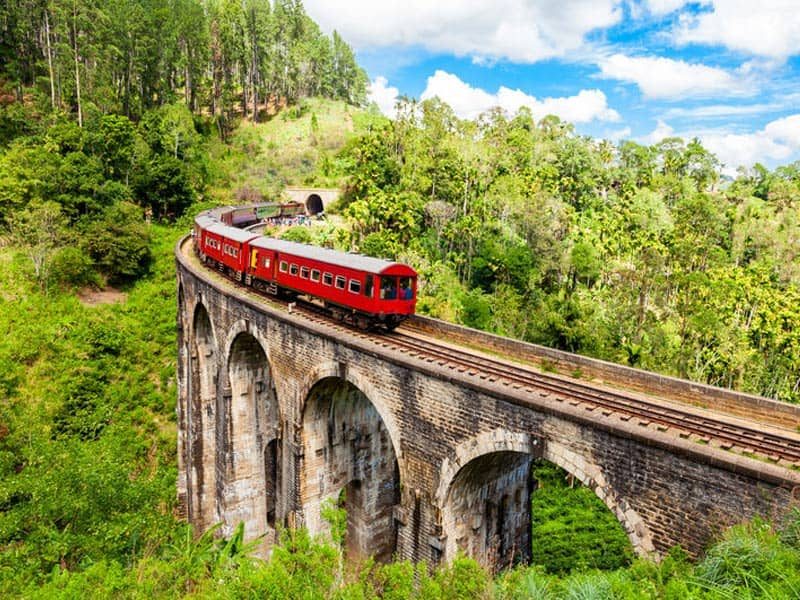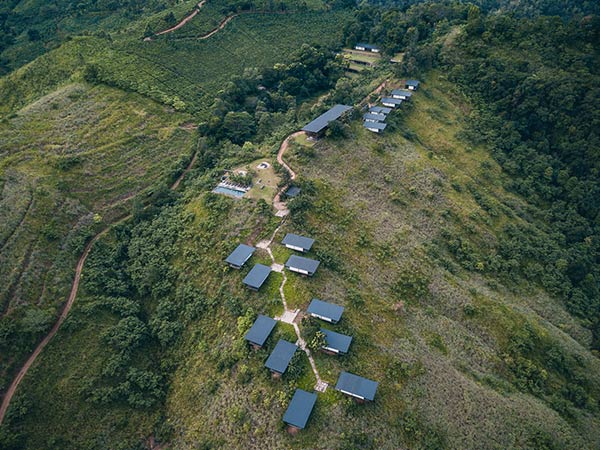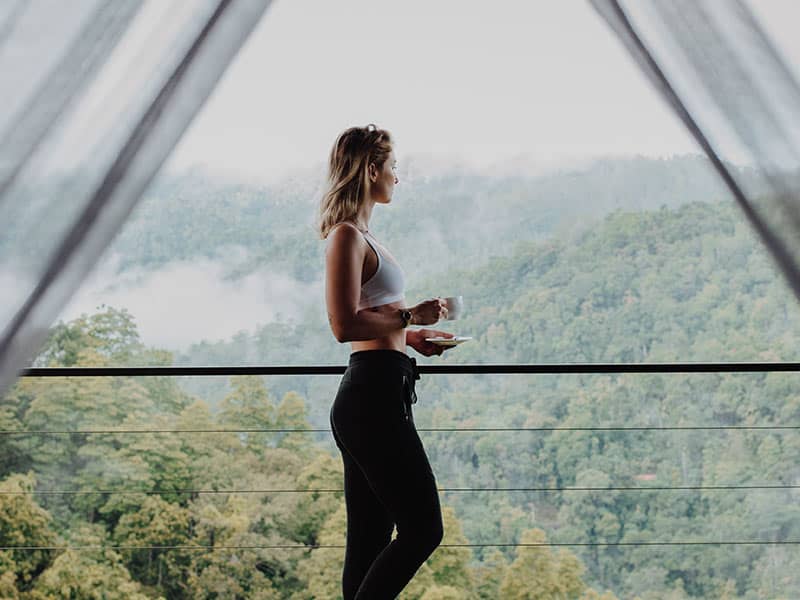Perhaps not as famous as its Asian counterparts – the likes of Japan or Korea – or its South Asian companions such as India and Thailand, Sri Lanka is an enigma and a mystery to some. Some know nothing at all about the island, some have heard of the name in connection to tea and beaches and have a vague idea of a hot, tropical country, but have no nuanced grasp of this by turns intensely beautiful and laidback pearl of the Indian Ocean.
So, you may ask, where is Sri Lanka? How does one get there? What does one do there? Well, here’s a handy guide to this hidden gem of an isle. Sri Lanka is located in the Indian Ocean as mentioned earlier, under its immediate neighbour, India. Its location was important, as it served as a convenient waypoint for traders crossing the seas, thus making the country itself a hub of trading activities. Spices, gems, coffee and tea – you name it, Serendib or Ceylon, as the old names went, would have it! The weather in the country is tropical, and runs on the hot side, with yearlong warm weather, making it an ideal place to visit at any time of the year.
When looking to travel to the country, it’s best to know how long flights take. Flights from India naturally take very little time, and in general, it’s easiest to get to the country from there and from in and around Asia. Flights from England take around 11 hours if you fly non-stop, but you can opt for stops at destinations such as Singapore or Bangkok. Flying in from Australia is more or less the same as from the UK. Flying in from America is fairly long, clocking in at around 20 hours or more, and at least one change of plan is necessary. The main airport in Sri Lanka is the Bandaranaike International Airport. The drive to the capital of the city – Colombo – from the airport can take a little more than an hour depending on the time of day, but you can spend a night in another city close by, Negombo, a breezy seaside town that will give you a taste of what is to come.
Sri Lanka can be overwhelming at the start, what with the hot sun, unfamiliar language and culture as well as the spicy food. But all of this excites the senses and makes the country vibrant and alive. You should expect balmy weather, with a good dose of humidity. Pack accordingly, and opt for comfy light clothing and open shoes. Of course, if you venture up country, as you inevitably will if you are an intrepid explorer, you’ll find it useful to pack a jacket and warmer clothing. And of course, holy sites require knees, shoulders, and heads covered so have appropriate clothing at the ready (in a pinch, a shawl will work for bared shoulders!).
Depending on where you are from, Sri Lanka’s cuisine may surprise you. It is notoriously spicy, but that is only one aspect of the diverse food culture in the island. If you cannot handle the spice, you can request restaurants to tone it down, and hotel buffets will always have options that don’t lean too heavily into the chilli powder. The breakfasts here are a special treat, so make sure you try a good spread! Also be ready for the friendly behaviour of the locals! Wherever you go, whether the cities and towns or villages, people will call out greetings and may even chat to you in English about sights to see and little tips to follow. Be wary, as you would anywhere in the world, of those trying to take advantage, but be open to experiences of human connection that transcend barriers such as language and race!
After all, there is a reason why the country has been recognised by so many international publications as a brilliant place to visit. Lonely Planet named it the top destination of 2019, reiterating the decision halfway through the year. The Daily Mail, Condé Nast and many others have also talked about it. Andrew Harries, for the Scottish Daily Mail for instance, wrote about a visit to the country for a milestone in his marriage – that included a visit to a sister hotel of the one he and his wife originally honeymooned in. The personal article touched on the beauty of the culture of tea in the country, and highlighted the diversity of the country, as well as the wild animals he had a chance to see! Condé Nast included the country quite high up on a list of some of the best places to visit, landing it fourth on ‘Condé Nast Traveler Reader’s Choice Awards’, calling to attention the beauty and history of the country. What makes the inclusion more special is the knowledge that the list was voted on by CN readers, proving that the country is beloved by actual informed and experienced travellers themselves. The international world thus clearly views the country as a destination that is wonderful and can only grow going forward.
This is because Sri Lanka is more than just tea and beaches. There is a burgeoning interest in wellness around the world, and Sri Lanka is home to some peaceful, ancient techniques that permeate philosophies promoting holistic wellness. The island thus holds some of the best wellness resorts in the world, including the internationally renowned Santani Resort & Spa. The resort is focused on wellness, and offers one on one therapy, Ayurveda and Yoga and also promises an experience that aligns guests with the beauty and serenity of nature.
Some other lesser known experiences include the wonder of whale and dolphin watching. Sri Lanka is within the area of the International Whaling Commission’s Protected Zone in the Indian Ocean and is one of the best places in the world to spot these majestic creatures. Kalpitiya, Mirissa, and Trincomalee are the best spots, and those who opt for this experience have the opportunity to possibly see some of more than 20 species of whales! The best time to go is from November to April, and many enjoy the sightings immensely.
Sri Lanka also has some truly magical waterfalls, such as Dunhinda. The waterfall becomes an ethereal mist as it crashes into the pool below it, and you can reach it via an interesting trek. The hike holds the opportunity of sightings of birds, monkeys, deer and more! Ella Wala is another beautiful fall that ends in a large pool that can be swum in. Dipping into the water after the strenuous trek is a real treat. Kadiyanlena is a hidden gem, and the fall flows down five series of pools, with the first one being extremely deep and dangerous to swim in, while the other four are safe. Laxapana Ella is an iconic fall on the country. The water shoots down in a magnificent steep arc, and it is possible to walk both to the base and top of the waterfall.
Other experiences include the thrill of white water rafting in Kithulgala. The best part about this fun activity is that it doesn’t require any experience, and almost anyone can try it. Strapped in life jackets, you can wrestle with the rapids and enjoy a tumultuous ride in the froth of the river. For a less strenuous activity, bird watching is quite popular in the country, due to the sheer number of suitable parks and reserves along with the diverse collection of birds that either live in or migrate to the isle! There are many endemic species, and an exciting list of exotic birds that visit. You can indulge in some bird watching in forests such as Sinharaja, or some of the national parks such as Wilpattu, Udawalawe, Bundala, Kumana etc.
After all, Sri Lanka is a country which puts one in close contact with nature. Take hiking, for instance, as scaling the UNESCO World Heritage Site the Knuckles Mountain Range is an experience in and of itself. The range is immense, and holds a plethora of hiking trails, so do your research and choose what interests you the most. You need not be worried about getting lost, however, as going with a guide is required. Take plenty of water, feel free to replenish bottles with streams you pass by, and be aware of the ubiquity of leeches!


